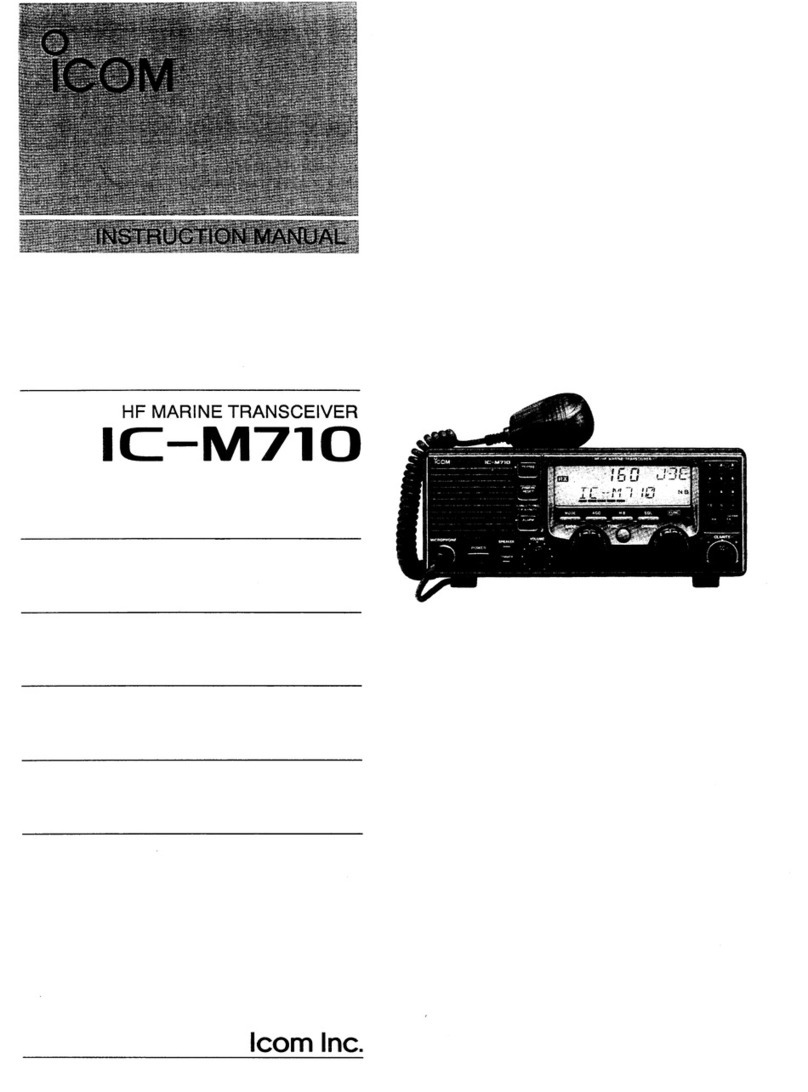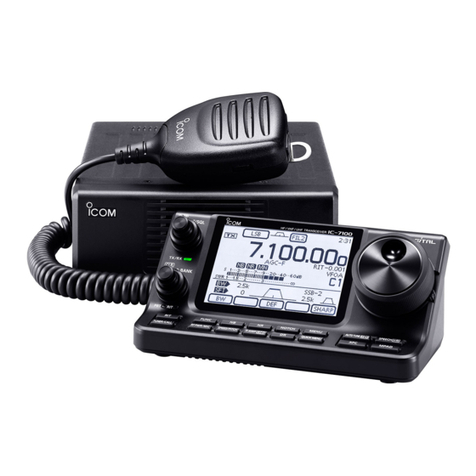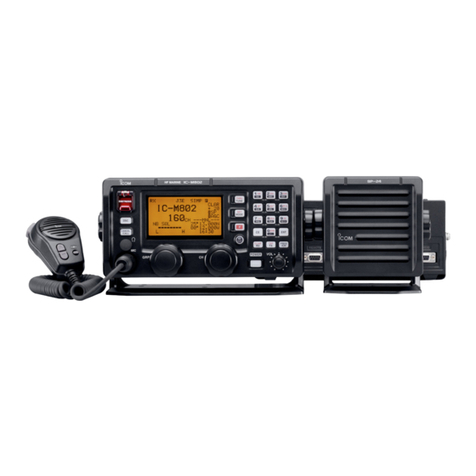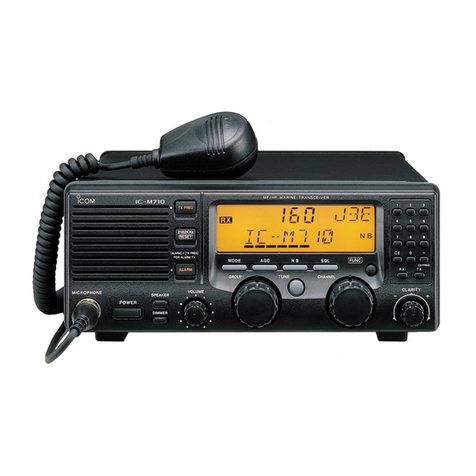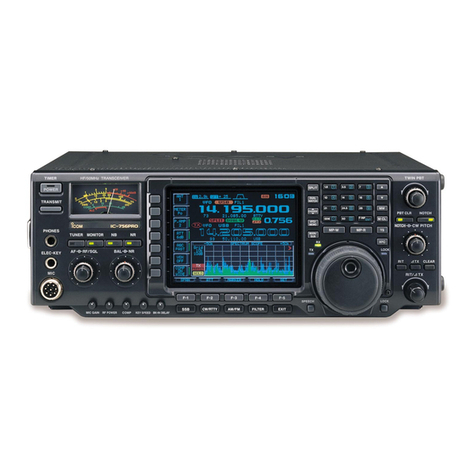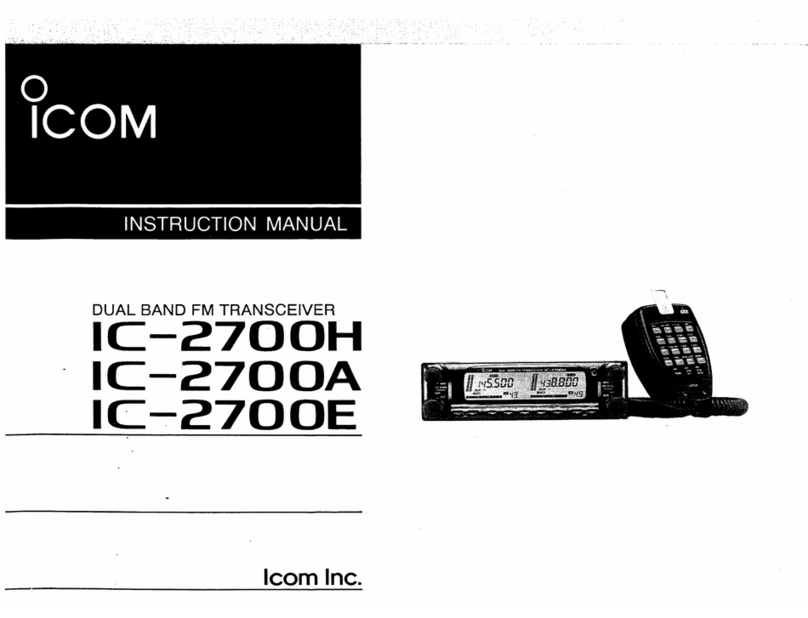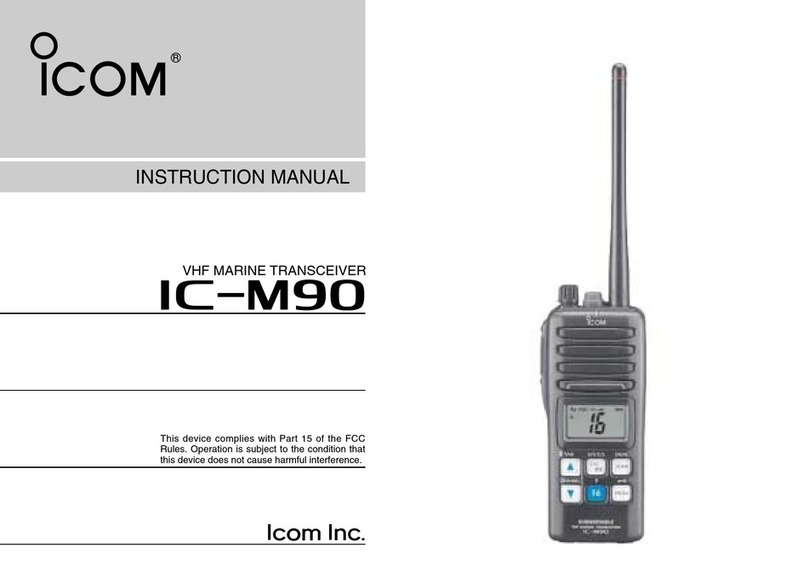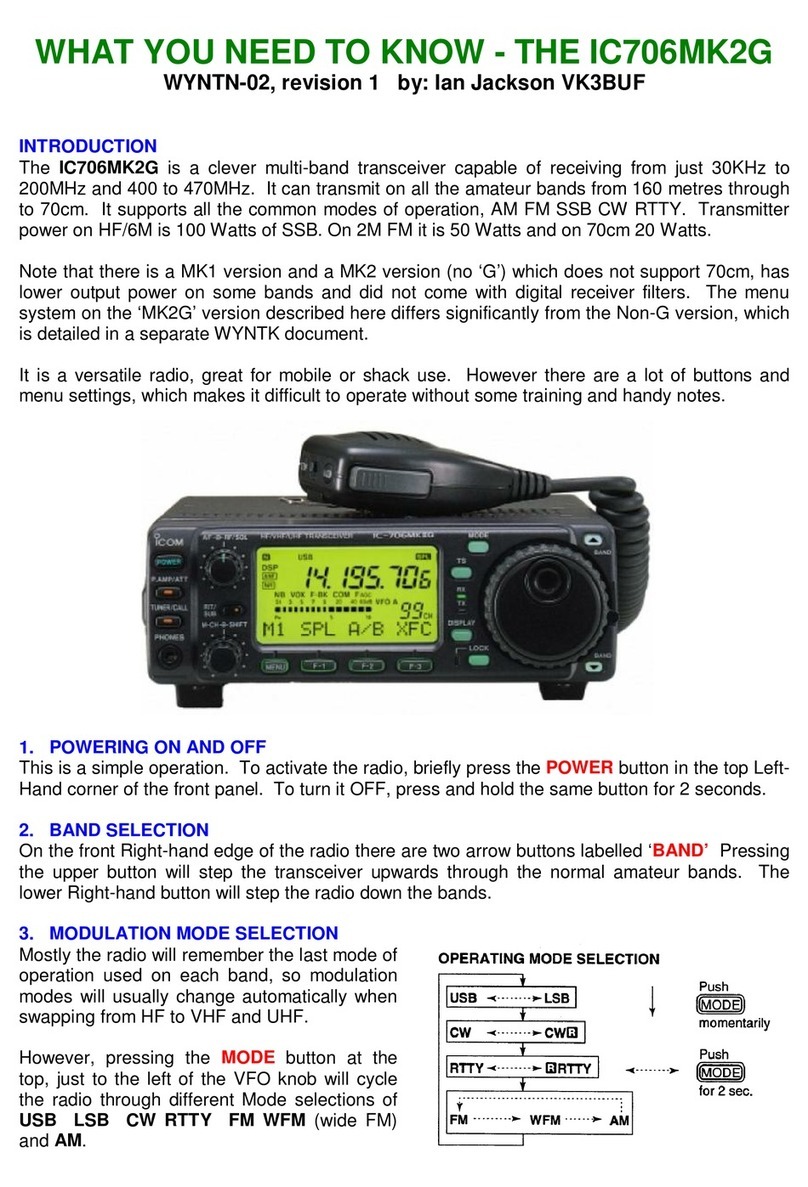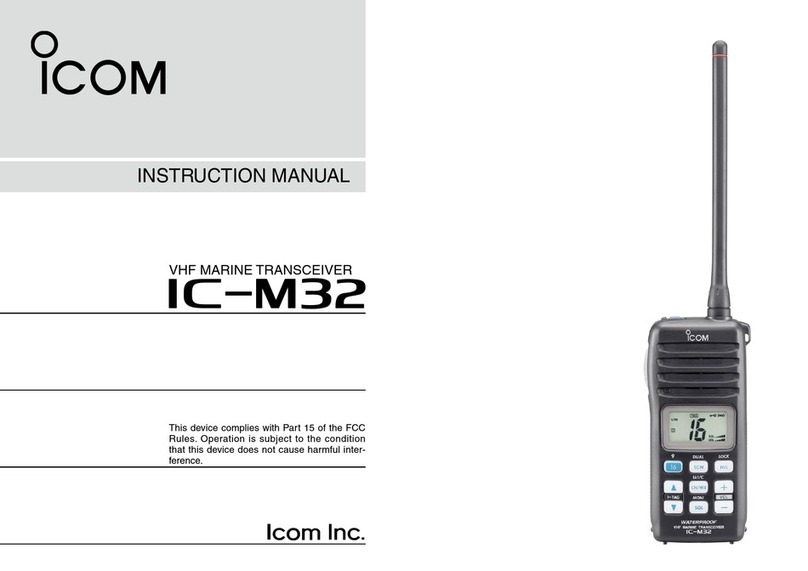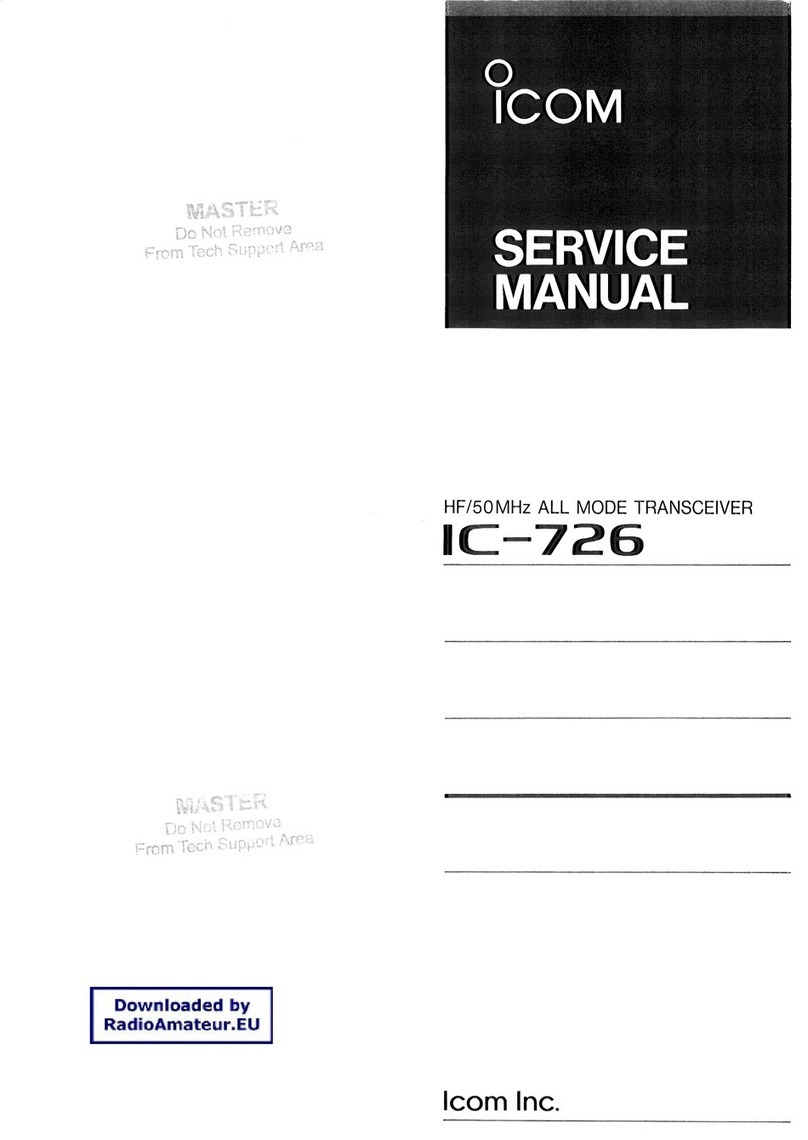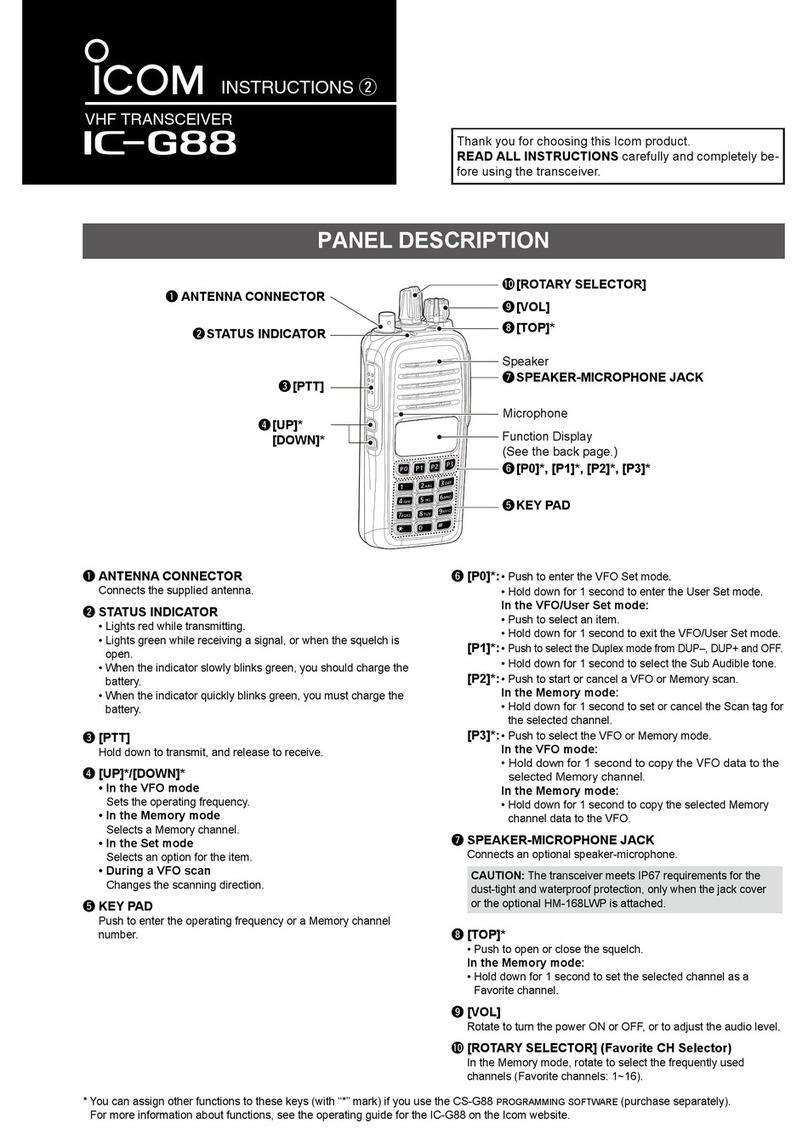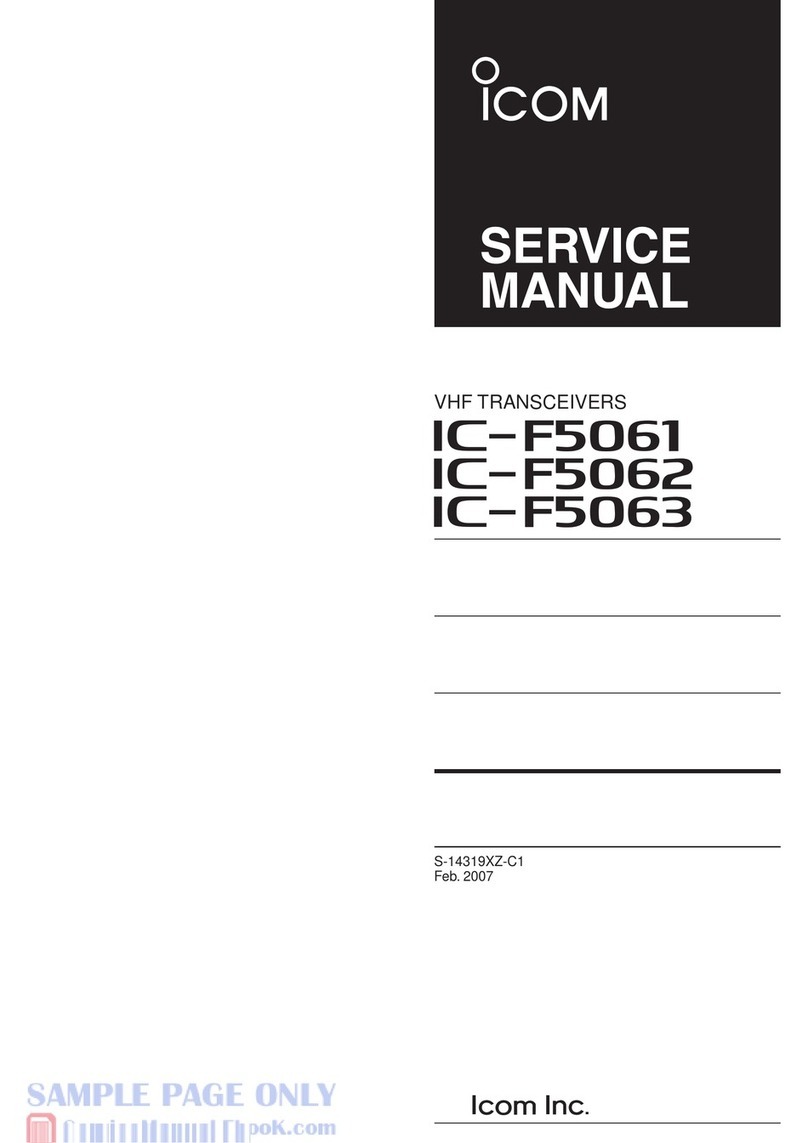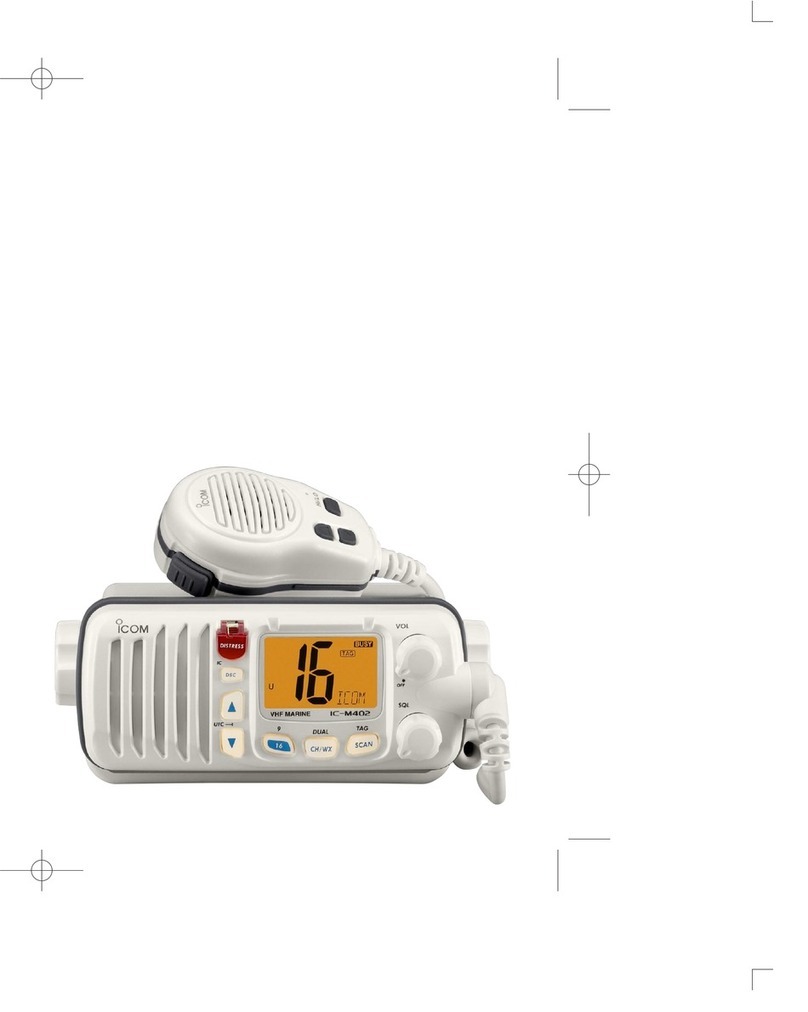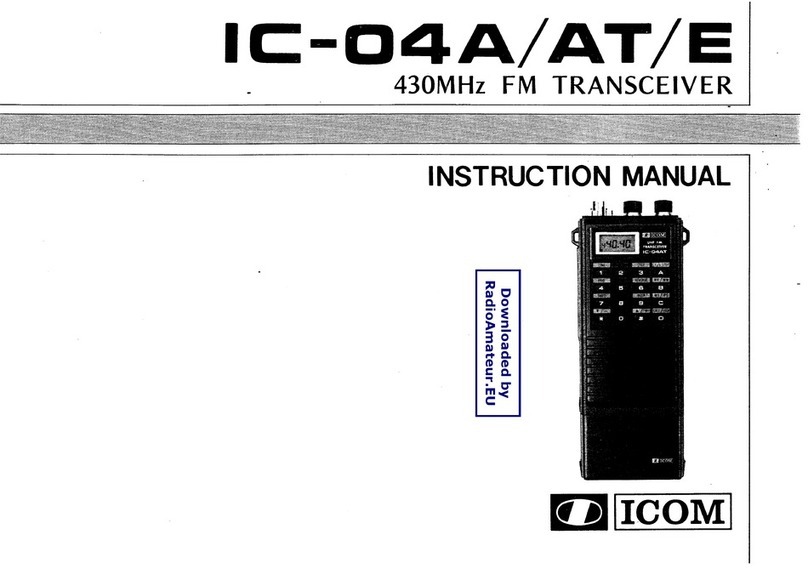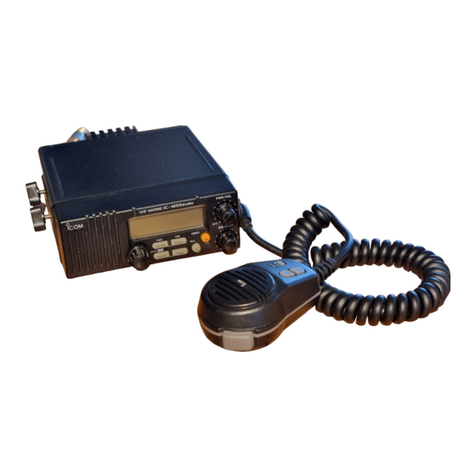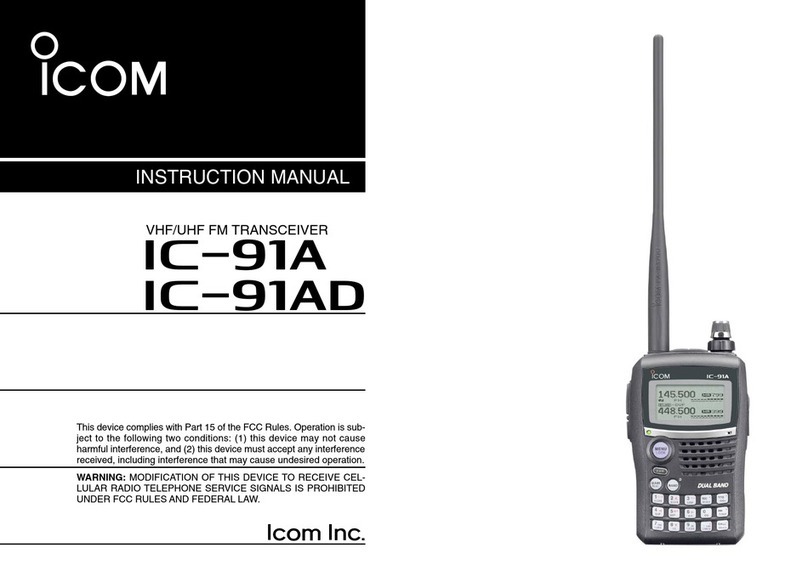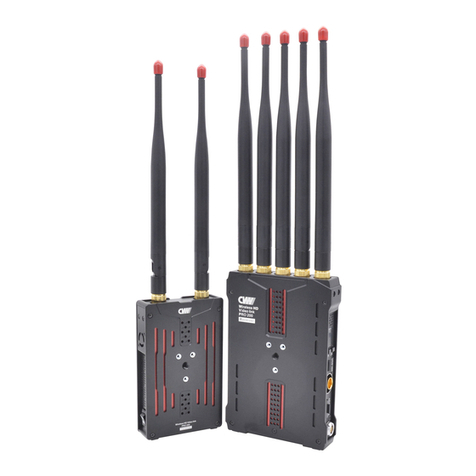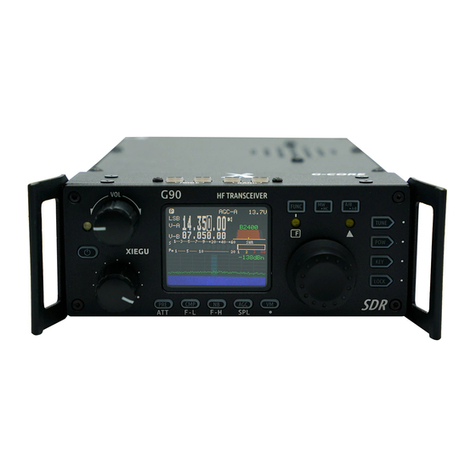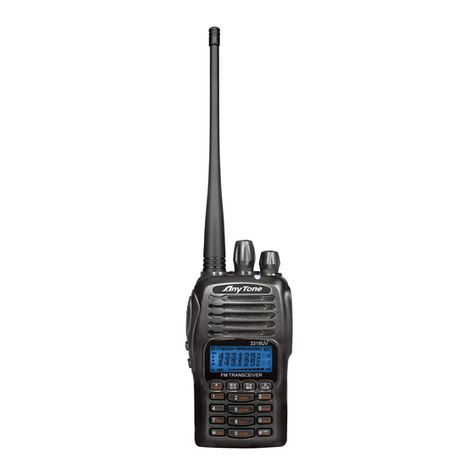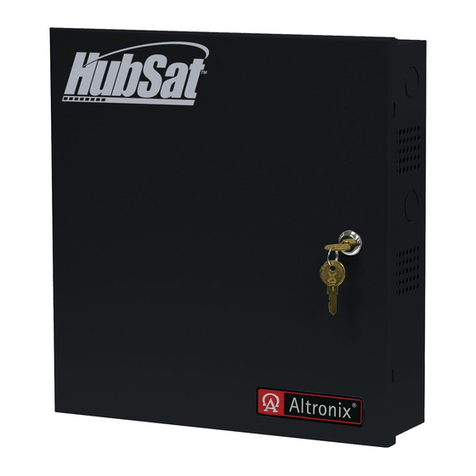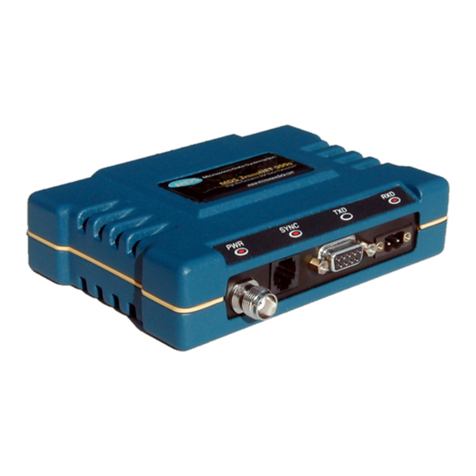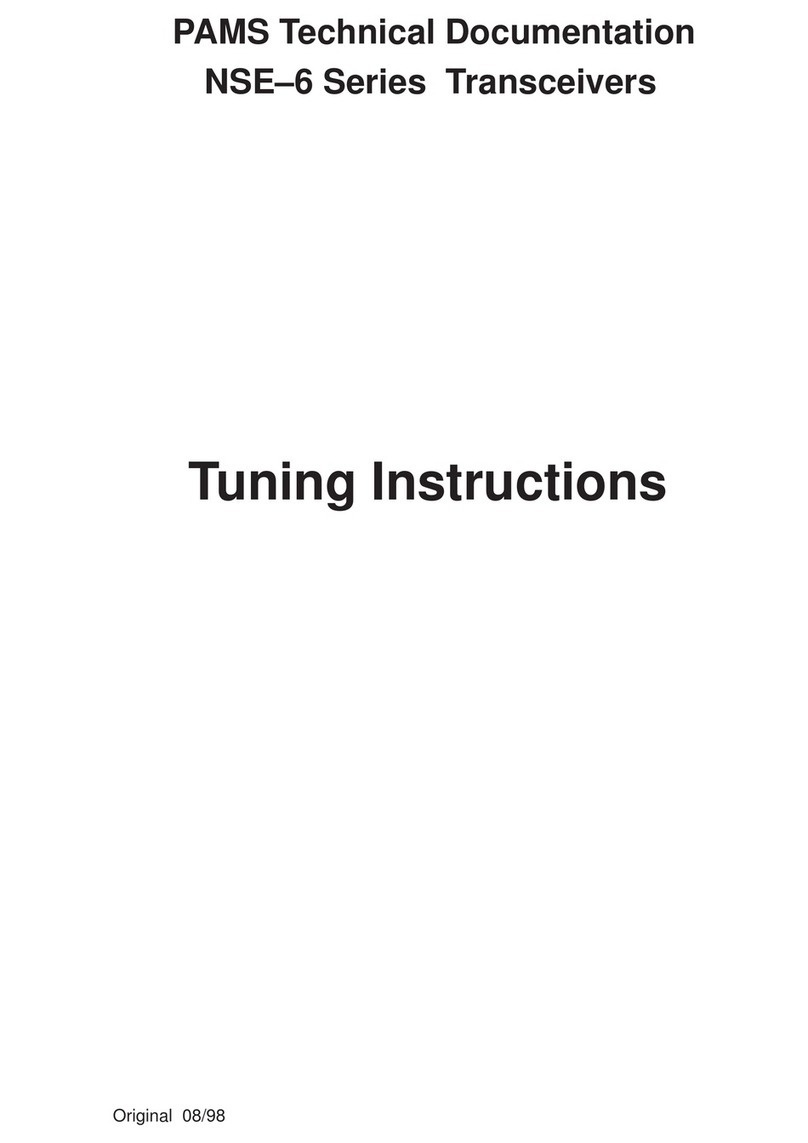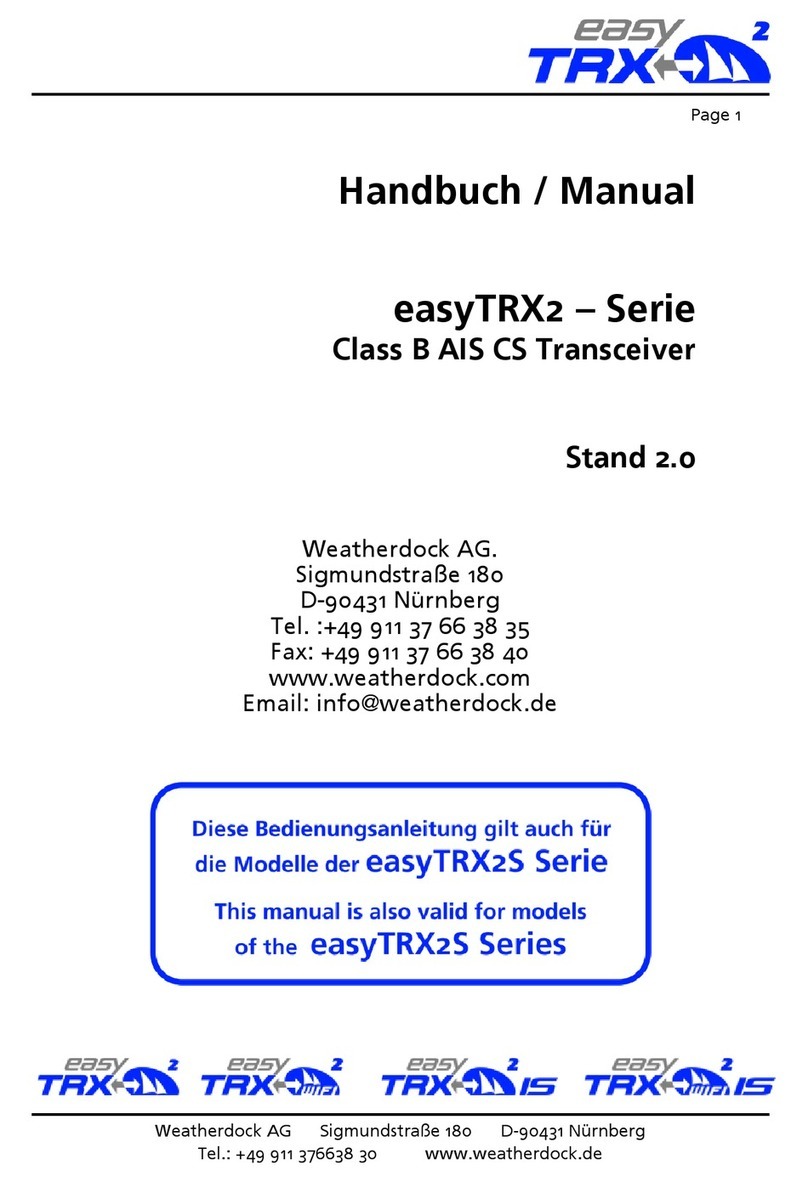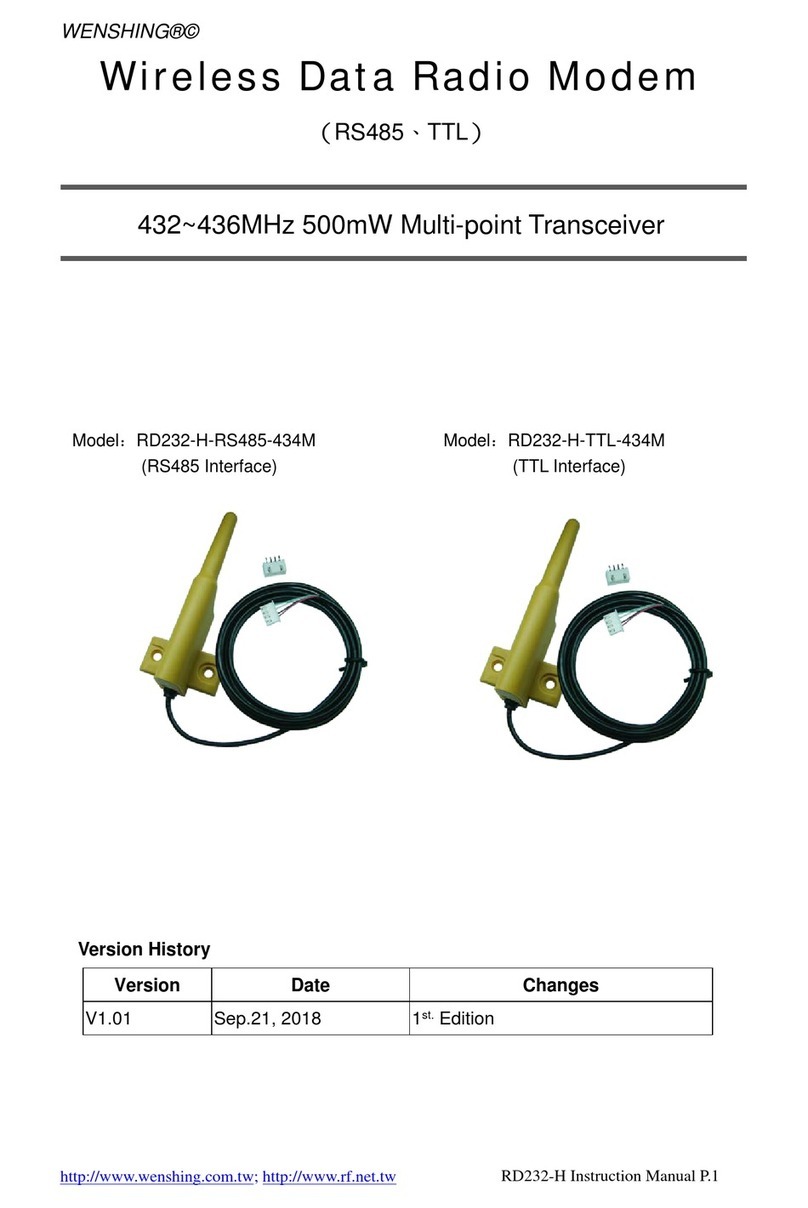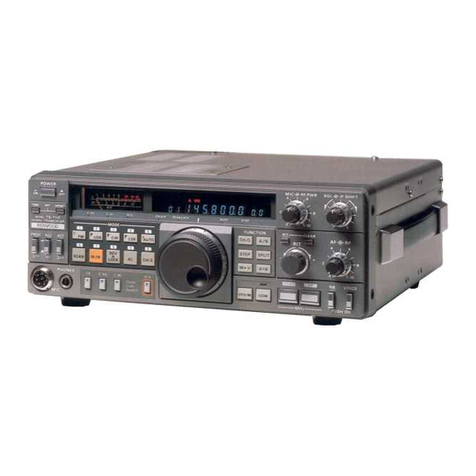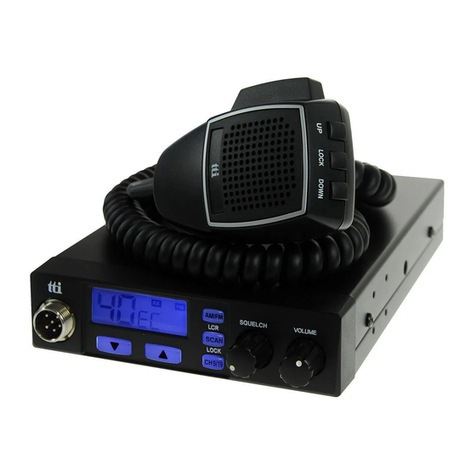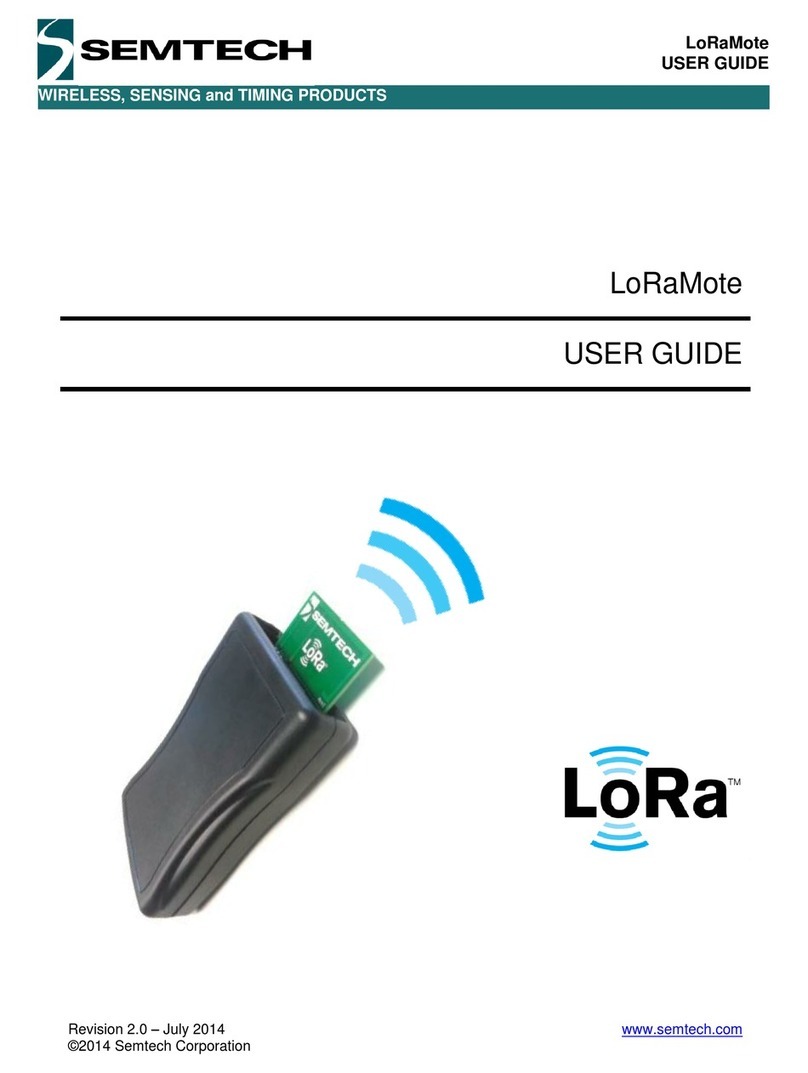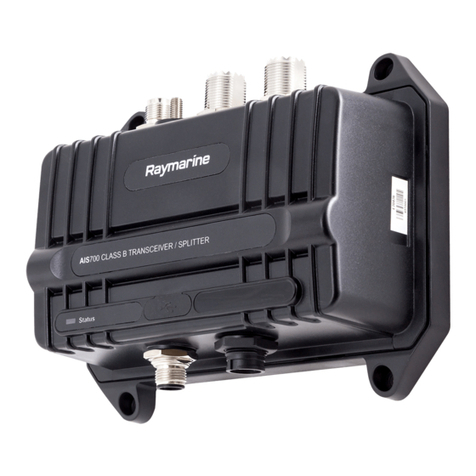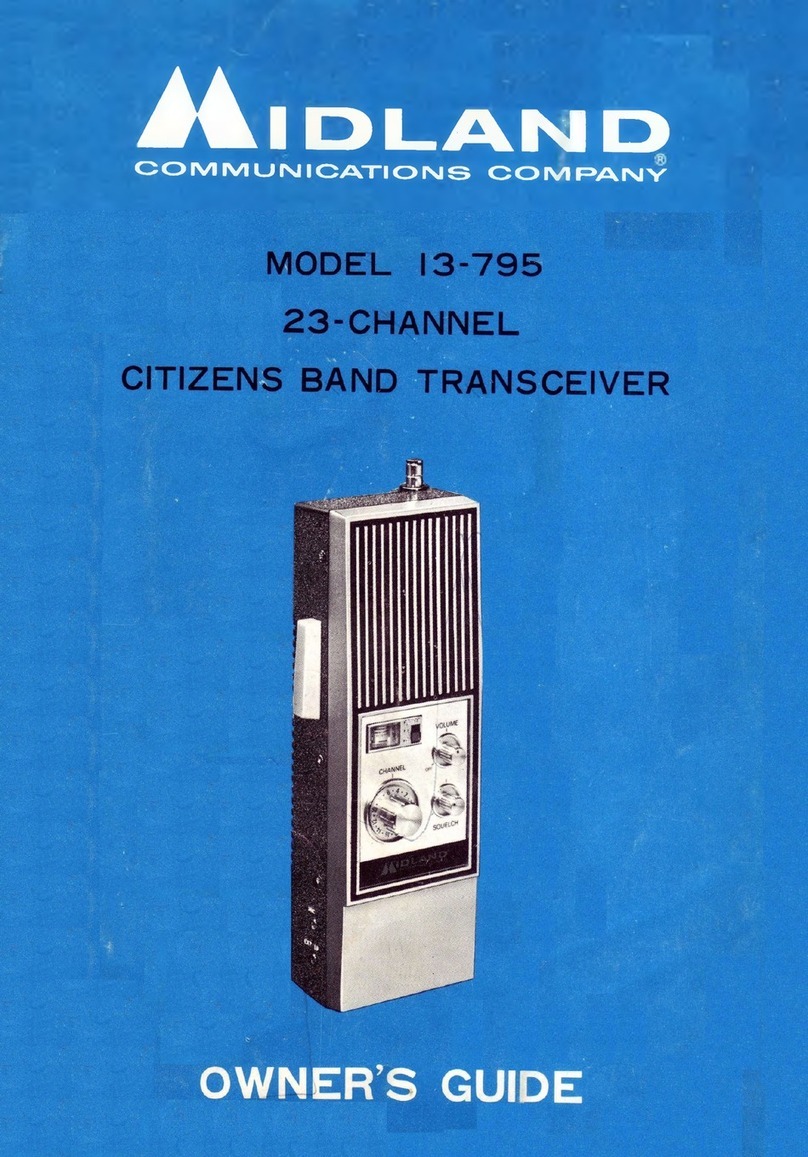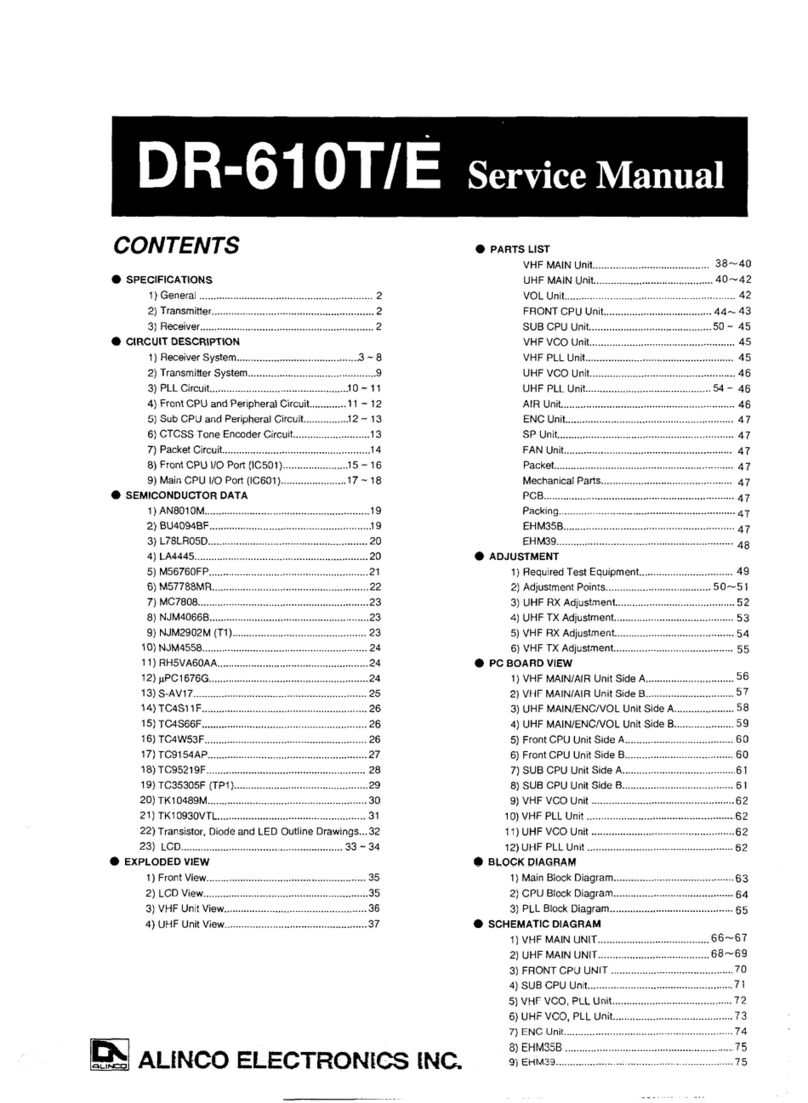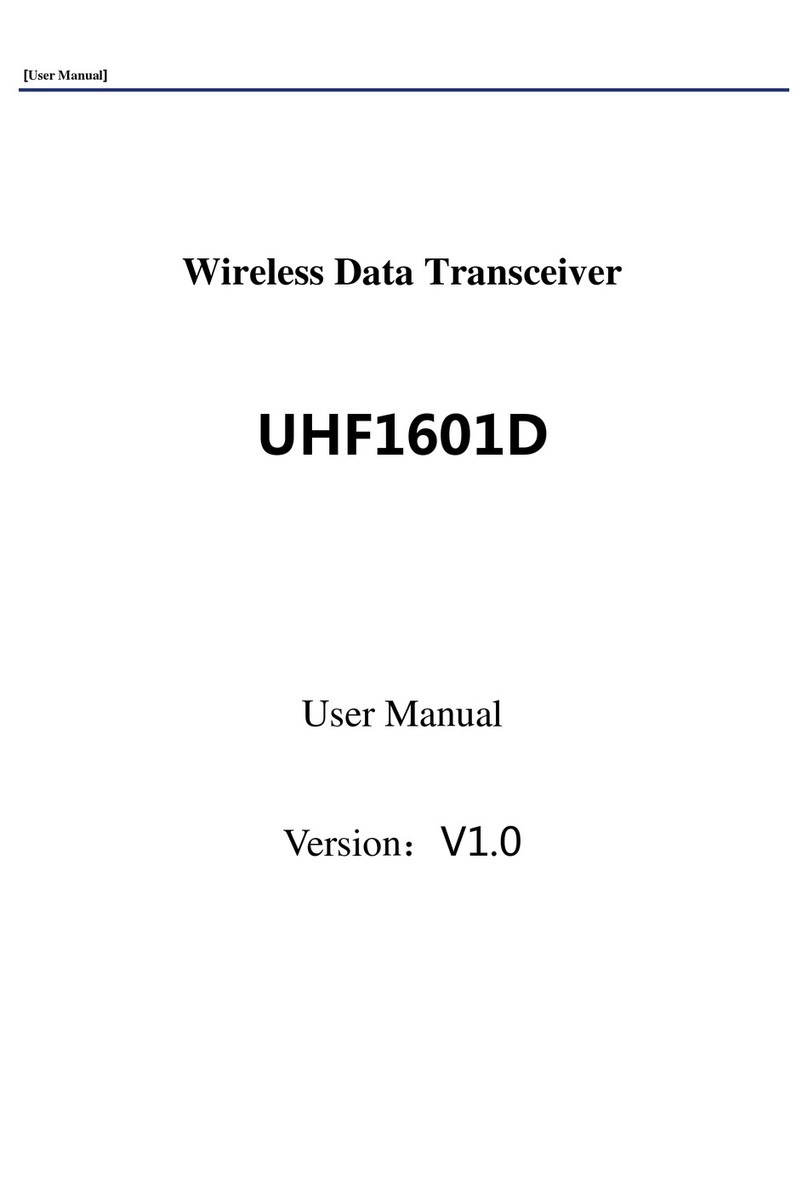Icom IC-M73 User manual

INSTRUCTION MANUAL
iM73
VHF MARINE TRANSCEIVER
This device complies with Part 15 of the FCC Rules. Opera-
tion is subject to the condition that this device does not cause
harmful interference.
iM73EURO
IC-M73 IC-M73EURO
(These transceivers use the FA-S64V)

i
New2001
Thank you for purchasing this Icom product. The IC-M73/
IC-M73EURO vhf marine transceiver is designed and built
with Icom’s state of the art technology and craftsmanship.
With proper care, this product should provide you with years
of trouble-free operation.
IMPORTANT
READ ALL INSTRUCTIONS carefully and completely
before using the transceiver.
SAVE THIS INSTRUCTION MANUAL — This in-
struction manual contains important operating instructions
for the IC-M73/IC-M73EURO.
EXPLICIT DEFINITIONS
WORD DEFINITION
RDANGER! Personal death, serious injury or an ex-
plosion may occur.
RWARNING! Personal injury, fire hazard or electric
shock may occur.
CAUTION Equipment damage may occur.
NOTE If disregarded, inconvenience only.No risk
of personal injury, fire or electric shock.
DISPOSAL
The crossed-out wheeled-bin symbol on your
product, literature, or packaging reminds you
that in the European Union, all electrical and
electronic products, batteries, and
accumulators (rechargeable batteries) must be
taken to designated collection locations at the
end of their working life. Do not dispose of
these products as unsorted municipal waste. Dispose of
them according to the laws in your area.
Icom, Icom Inc. and Icom logo are registered trademarks of Icom Incorporated
(Japan) in Japan, the United States, United Kingdom, Germany, France, Spain,
Russia, Australia, New Zealand, and/or other countries.
ABOUT CE AND DOC
Hereby, Icom Inc. declares that the versions
of IC-M73 which have the “CE” symbol on the
product, comply with the essential requirements
of the Radio Equipment Directive, 2014/53/EU,
and the restriction of the use of certain hazard-
ous substances in electrical and electronic equipment Direc-
tive, 2011/65/EU.The full text of the EU declaration of confor-
mity is available at the following internet address:
http://www.icom.co.jp/world/support

ii
New2001
RDANGER! NEVER short the terminals of the battery
pack.
RDANGER! Use and charge only specified Icom battery
packs with Icom radios or Icom chargers.Only Icom battery packs
are tested and approved for use with Icom radios or charged with
Icom chargers. Using third-party or counterfeit battery packs or
chargers may cause smoke, fire, or cause the battery to burst.
RWARNING! NEVER connect the transceiver to an AC
outlet. This may pose a fire hazard or result in an electric shock.
RWARNING! NEVER hold the transceiver so that the an-
tenna is closer than 2.5 cm (1 inch) from exposed parts of the
body, especially the face or eyes, while transmitting. The trans-
ceiver will perform best if the microphone is 5 to 10 cm (2 to 4
inches) away from the lips and the transceiver is vertical.
CAUTION: NEVER connect the transceiver to a power
source other than the products specified by Icom. Such a connec-
tion will ruin the transceiver.
CAUTION: MAKE SURE the flexible antenna and bat-
tery pack are securely attached to the transceiver, and that the
antenna and battery pack are dry before attachment. Exposing
the inside of the transceiver to water will result in serious damage
to the transceiver.
BE CAREFUL! The transceiver meets IPX8 requirements
for waterproof protection. However, once the transceiver has
been dropped, waterproof protection cannot be guaranteed be-
cause of possible damage to the transceiver's case or the water-
proof seal.
PRECAUTIONS
Icom is not responsible for the destruction, damage to, or
performance of any Icom or non-Icom equipment, if the mal-
function is because of:
• Force majeure, including, but not limited to, res, earth-
quakes, storms, floods, lightning, other natural disasters,
disturbances, riots, war, or radioactive contamination.
• The use of Icom transceivers with any equipment that is
not manufactured or approved by Icom.
DO NOT use or place the transceiver in direct sunlight or in
areas with temperatures below –20°C (–4°F) or above +60°C
(+140°F) for the EXP/USA versions, below –15°C (+5°F) or
above +55°C (+131°F) for the CHN/EUR/FRG/HOL/UK versions,
and below –10°C (+14°F) or above +55°C (+131°F) for the AUS
versions.
DO NOT use harsh solvents such as benzine or alcohol when
cleaning, as they will damage the transceiver surfaces.
DO NOT push [PTT] when not actually intending to transmit.
DO NOT modify the transceiver.The transceiver warranty does
not cover any problems caused by unauthorized modification.
DO NOT operate the transceiver near unshielded electrical
blasting caps or in an explosive atmosphere.
KEEP the transceiver out of the reach of children.
KEEP the transceiver at least 0.9 meter (3.0 feet) away from
your vessel’s magnetic navigation compass.

iii
RADIO OPERATOR WARNING
Your Icom radio generates RF electromagnetic energy during
transmit mode. This radio is designed for and classified as
“General Population Use” in an uncontrolled environment.
This radio has been evaluated for compliance at the distance
of 2.5 cm (1 inch) with the FCC and IC RF exposure limits for
“
General Population Use.
” In addition, your Icom radio com-
plies with the following Standards and Guidelines with regard
to RF energy and electromagnetic energy levels and evalua-
tion of such levels for exposure to humans:
• FCC OET Bulletin 65 Edition 01-01 Supplement C, Evaluating Compli-
ance with FCC Guidelines for Human Exposure to Radio Frequency
Electromagnetic Fields.
• American National Standards Institute (C95.1-1992), IEEE Standard
for Safety Levels with Respect to Human Exposure to Radio Frequency
Electromagnetic Fields, 3 kHz to 300 GHz.
• American National Standards Institute (C95.3-1992), IEEE Recom-
mended Practice for the Measurement of Potentially Hazardous Electro-
magnetic Fields– RF and Microwave.
• The following accessories are authorized for use with this product. Use of
accessories other than those specified may result in RF exposure levels
exceeding the FCC
and IC
requirements for wireless RF exposure.; Belt
Clip (MB-103), Rechargeable Li-ion Battery Pack (BP-245H).
To ensure that your expose to RF electromagnetic en-
ergy is within the FCC
and IC
allowable limits for general
population use, always adhere to the following guide-
lines:
• DO NOT operate the radio without a proper antenna attached, as this
may damaged the radio and may also cause you to exceed FCC
and
IC
RF exposure limits. A proper antenna is the antenna supplied with
this radio by the manufacturer or antenna specifically authorized by the
manufacturer for use with this radio.
• DO NOT transmit for more than 50% of total radio use time (“50% duty
cycle”). Transmitting more than 50% of the time can cause FCC
and IC
RF exposure compliance requirements to be exceeded. The radio is
transmitting when the “transmit indicator” appears on the LCD. You can
cause the radio to transmit by pressing the “PTT” switch.
• ALWAYS keep the antenna at least 2.5 cm (1 inch) away from the body
when transmitting and only use the Icom belt clip which is listed on page
43 when attaching the radio to your belt, etc., to ensure FCC
and IC
RF
exposure compliance requirements are not exceeded. To provide the re-
cipients of your transmission the best sound quality, hold the antenna at
least 5 cm (2 inches) from your mouth, and slightly off to one side.
The information listed above provides the user with the information needed
to make him or her aware of RF exposure, and what to do to assure that this
radio operates with the FCC
and IC
RF exposure limits of this radio.
Electromagnetic Interference/Compatibility
During transmissions, your Icom radio generates RF energy that can possibly
cause interference with other devices or systems. To avoid such interference,
turn off the radio in areas where signs are posted to do so. DO NOT operate
the transmitter in areas that are sensitive to electromagnetic radiation such as
hospitals, aircraft, and blasting sites.
WARNING
CAUTION

iv
AVERTISSEMENT POUR LES OPÉRATEURS RADIO
Votre radio Icom produit une énergie électromagnétique
de radiofréquences (RF), en mode de transmission. Elle
est conçue pour une «utilisation grand public», dans un
environnement non contrôlé. Cet appareil a été évalué et
jugé conforme, à 2,5 cm, aux limites d'exposition aux RF
de la FCC et d’IC, pour une «utilisation grand public». En
outre, votre radio Icom satisfait les normes et directives
qui suivent en matière de niveaux d'énergie et d'énergie
électromagnétique de RF et d'évaluation de tels niveaux
en ce qui concerne l'exposition humaine :
• Supplément C, édition 01-01, du Bulletin OET de la FCC, «Evaluating
Compliance with FCC Guidelines for Human Exposure to Radio Frequency
Electromagnetic Fields».
• Norme de l’American National Standards Institute (ANSI) : IEEE C95.1-
1992 sur les niveaux de sécurité compatibles avec l’exposition humaine aux
champs électromagnétiques de radiofréquences (3 kHz à 300 GHz).
• Norme de l’ANSI : IEEE C95.3-1992 sur la méthode d’évaluation recomman-
dée du champ magnétique potentiellement dangereux des radiofréquences
et des micro-ondes.
• Les accessoires qui suivent sont approuvés pour une utilisation avec ce
produit. L'utilisation d'accessoires autres que ceux précisés peut entraîner
des niveaux d'exposition aux RF supérieures aux limites établies par la FCC
et d’IC en matière d'exposition aux RF sans fil; attache pour ceinture (MB-
103), bloc-piles rechargeable au lithium-ion (BP-245H).
CAUTION
Afin de vous assurer que votre exposition à une
énergie électromagnétique de RF se situe dans
les limites permises par la FCC et d’IC pour une
utilisation grand public, veuillez en tout temps
respecter les directives suivantes :
• NE PAS faire fonctionner la radio sans qu'une antenne appropriée y soit
fixée, car ceci risque d'endommager la radio et causer une exposition
supérieure aux limites établies par la FCC et d’IC. L'antenne appropriée
est celle qui est fournie avec cette radio par le fabricant ou une antenne
spécialement autorisée par le fabricant pour être utilisée avec cette radio.
• NE PAS émettre pendant plus de 50% du temps total d'utilisation de
l'appareil («50% du facteur d'utilisation»). Émettre pendant plus de 50% du
temps total d'utilisation peut causer une exposition aux RF supérieure aux
limites établies par la FCC et d’IC. La radio est en train d’émettre lorsque le
témoin du mode de transmission s'affiche sur l'écran ACL. La radio émettra
si vous appuyez sur le bouton du microphone.
• TOUJOURS tenir l'antenne éloignée d'au moins 2,5 cm de votre corps
au moment d'émettre et utiliser uniquement l'attache pour ceinture Icom
illustrée à la p. 43, lorsque vous attachez la radio à votre ceinture, ou à
autre chose, de façon à vous assurer de ne pas provoquer une exposition
aux RF supérieure aux limites fixées par la FCC et d’IC. Pour offrir à vos
interlocuteurs la meilleure qualité de transmission possible, tenez l'antenne
à au moins 5 cm de votre bouche et légèrement de côté.
Les renseignements ci-dessus fournissent à l'utilisateur toute l'information
nécessaire sur l'exposition aux RF et sur ce qu'il faut faire pour assurer que
cette radio fonctionne en respectant les limites d'exposition aux RF établies
par la FCC et d’IC.
Interférence électromagnétique et compatibilité
En mode de transmission, votre radio Icom produit de l'énergie de RF qui
peut provoquer des interférences avec d'autres appareils ou systèmes. Pour
éviter de telles interférences, mettez la radio hors tension dans les secteurs
où une signalisation l’exige. NE PAS faire fonctionner l'émetteur dans des
secteurs sensibles au rayonnement électromagnétique tels que les hôpitaux,
les aéronefs et les sites de dynamitage.
AVERTISSEMENT
MISE EN GARDE

v
This equipment has been tested and found to comply with the
limits for a Class A digital device, pursuant to part 15 of the
FCC Rules. These limits are designed to provide reasonable
protection against harmful interference when the equipment
is operated in a commercial environment. This equipment
generates, uses, and can radiate radio frequency energy
and, if not installed and used in accordance with the instruc-
tion manual, may cause harmful interference to radio commu-
nications. Operation of this equipment in a residential area is
likely to cause harmful interference in which case the user will
be required to correct the interference at his own expense.
CAUTION: Changes or modifications to this device, not ex-
pressly approved by Icom Inc., could void your authority to
operate this device under FCC regulations.
FCC INFORMATION IN CASE OF EMERGENCY
If your vessel requires assistance, contact other vessels and
the Coast Guard by sending a distress call on Channel 16.
❍ USING CHANNEL 16
DISTRESS CALL PROCEDURE
1. “MAYDAY MAYDAY MAYDAY.”
2. “THIS IS ...........................” (name of vessel)
3. Say your call sign or other indication of the
vessel.
4. “LOCATED AT ..................... ” (your position)
5.State the nature of the distress and
assistance required.
6. Give any other information which might
facilitate the rescue.

vi
New2001
RECOMMENDATION
CLEAN THE TRANSCEIVER THOROUGHLY IN A BOWL
OF FRESH WATER after exposure to saltwater, and dry it
before operating. Otherwise, the transceiver's keys, switches
and controllers may become unusable, due to salt crystalliza-
tion, and/or the charging terminals of the battery pack may
corrode.
NOTE: IF the transceiver's waterproof protection appears
defective, carefully clean it with a soft, damp (fresh water)
cloth, then dry it before operating.
The transceiver may lose its waterproof protection if the
case, jack cap, or connector cover is cracked or broken, or
the transceiver has been dropped.
Contact your Icom distributor or your dealer for advice.

New2001
vii
New2001
TABLE OF CONTENTS
IMPORTANT...................................................................................... i
EXPLICIT DEFINITIONS................................................................... i
DISPOSAL......................................................................................... i
ABOUT CE AND DOC ...................................................................... i
PRECAUTIONS................................................................................ ii
RADIO OPERATOR WARNING ...................................................... iii
AVERTISSEMENT POUR LES OPÉRATEURS RADIO.................. iv
FCC INFORMATION ........................................................................ v
IN CASE OF EMERGENCY............................................................. v
RECOMMENDATION ...................................................................... vi
1 OPERATING RULES ..................................................................1
2 SUPPLIED ACCESSORIES AND ATTACHMENTS ...............2–3
❍ Supplied accessories ................................................................2
❍ Attachments ..............................................................................2
3 PANEL DESCRIPTION ...........................................................4–7
❍ Front, top and side panels .........................................................4
❍ Function display.........................................................................6
4 BASIC OPERATION .............................................................8–13
❍ Channel selection......................................................................8
❍ Receiving and transmitting ......................................................11
❍ Call channel programming.......................................................12
❍ Lock function ...........................................................................12
❍ Monitor function.......................................................................12
❍ Adjusting the squelch level ......................................................13
❍ AquaQuake water draining function ........................................13
5 SCAN OPERATION (Except for the Dutch version)............14–15
❍ Scan types...............................................................................14
❍ Setting Favorite channels ........................................................15
❍ Starting a scan ........................................................................15
6 DUALWATCH/TRI-WATCH (Except for the Dutch version).......16
❍ Description ..............................................................................16
❍ Operation.................................................................................16
7 FUNCTION MODE OPERATION ........................................17–24
❍ About the function mode .........................................................17
❍ Manual recording function (Depending on versions)...............18
❍
Automatic recording function (Depending on versions)
...............19
❍ Play back function (Depending on versions) ...........................20
❍ Channel naming function.........................................................21
❍ Opening comment entry function ............................................22
❍ ATIS code programming
(For only the Dutch and German versions)
............................ 23
❍ Backlight function ....................................................................24
8 SET MODE..........................................................................25–30
❍ SET mode programming .........................................................25
❍ SET mode items......................................................................26
9 BATTERY CHARGING .......................................................31–34
❍ Battery cautions.......................................................................31
❍ Supplied battery charger .........................................................33
❍ Optional battery chargers........................................................34
10 OPTIONAL SWIVEL BELT CLIP..............................................35
❍ Attaching .................................................................................35
❍ Detaching ................................................................................35
11 OPTIONAL SPEAKER-MICROPHONE....................................36
❍ HM-167 descriptions ...............................................................36
❍ Attaching .................................................................................36
12 TROUBLESHOOTING ..............................................................37
13 SPECIFICATIONS...............................................................38–39
14 VHF MARINE CHANNEL LIST........................................... 40–42
15 OPTIONS ..................................................................................43
INDEX.......................................................................................44–45

1
1
OPERATING RULES
New2001
1
2
3
4
5
6
7
8
9
10
11
12
13
14
15
16
DPriorities
• Read all rules and regulations pertaining to call priorities,
and keep an up-to-date copy handy. Safety and distress
calls take priority over all others.
• You must monitor Channel 16 when you are not operating
on another channel.
• False or fraudulent distress calls are prohibited under law.
DPrivacy
• Information overheard, but not intended for you, cannot law-
fully be used in any way.
• Indecent or profane language is prohibited.
DRadio licenses
(1) SHIP STATION LICENSE
You may require a current radio station license before using
the transceiver. It is unlawful to operate a ship station which is
not licensed, but required to be.
If required, contact your dealer or the appropriate govern-
ment agency for a Ship-Radiotelephone license application.
This government-issued license states the call sign which is
your craft’s identification for radio purposes.
(2) OPERATOR’S LICENSE
A Restricted Radiotelephone Operator Permit is the license
most often held by small vessel radio operators when a radio
is not required for safety purposes.
If required, the Restricted Radiotelephone Operator Permit
must be posted or kept with the operator. If required, only a
licensed radio operator may operate a transceiver.
However, non-licensed individuals may talk over a transceiver
if a licensed operator starts, supervises, ends the call and
makes the necessary log entries.
A current copy of the applicable government rules and regu-
lations is only required to be on hand for vessels in which
a radio telephone is compulsory. However, even if you are
not required to have these on hand it is your responsibility to
be thoroughly acquainted with all pertinent rules and regula-
tions.
NOTE: Even though the transceiver is capable of opera-
tion on VHF marine channels 3, 21, 23, 61, 64, 81, 82 and
83, according to FCC regulations these simplex channels
cannot be lawfully used by the general population in USA
waters.

New2001
2
New2001
SUPPLIED ACCESSORIES AND ATTACHMENTS
2
❍Supplied accessories ❍Attachments
DFlexible antenna
Connect the supplied flexible
antenna to the antenna connector.
CAUTION:
• NEVER carry the transceiver
by holding the antenna.
• Transmitting without an
antenna may damage the
transceiver.
DHandstrap
Pass the handstrap through the
loop on the top corner of the
transceiver, as illustrated to the
left. This facilitates carrying the
transceiver.
Flexible antenna*
Cigarette lighter cable*
Handstrap Battery Charger
(with two screws)
Belt clip
(with two screws)
Li-ion battery pack
AC adapter*
* Not supplied or different type may be supplied depending on the
transceiver version.

New2001
3
2
SUPPLIED ACCESSORIES AND ATTACHMENTS
New2001
1
2
3
4
5
6
7
8
9
10
11
12
13
14
15
16
DBattery pack
qAttach the battery pack into the transceiver.
Battery pack
wLock the battery pack with the latch.
Latch
CAUTION:
NEVER remove or attach the battery pack when the trans-
ceiver is wet or soiled. This may result in water or dust get-
ting into the transceiver and battery pack, and may result
in them being damaged.
Be careful! The latch is tightly locked, so use caution when
releasing it. DO NOT use your finger nail. Use the edge of
a coin or screwdriver tip to carefully release it.
DBelt clip
Attach the belt clip to the transceiver.
Supplied screws

New2001
4
New2001
PANEL DESCRIPTION
3
❍Front, top and side panels
q
w
e
y
t
r
Microphone
!2
!1
!0
o
u
i
Speaker
Function
display (p. 6)
qVOLUME CONTROL [VOL]
Turns ON power and adjusts the audio level.
wPTT SWITCH [PTT]
Hold down to transmit; release to receive.
e MONITOR KEY []
• Manually opens the squelch to monitor the channel while
held down. (p. 12)
• Push this switch, then adjust the squelch level with [Y]/
[Z]. (p. 13)
• While holding down this switch, turn the ON power to
enter the SET mode. (p. 25)
rCHANNEL 16 KEY [16/C]
• Selects Channel 16 when pushed. (p. 8)
•
Selects the Call channel when pushed for 1 second.
(p. 8)
•
Enters the Call channel write mode when the Call channel
is selected and this key is held down for 3 seconds. (p. 12)
tFUNCTION KEY [F]
• Enters the Function mode when pushed. (p. 17)
• The AquaQuake function is activated when held down for
1 second. (p. 13)
• While holding down this key, turn ON the power to enter
the recording counter mode.

1-1-32 Kamiminami, Hirano-ku, Osaka 547-0003, Japan
A7070D-1EX-8
Printed in Japan
©2013–2018 Icom Inc.
New2001
Printed on recycled paper with soy ink.
Other manuals for IC-M73
4
This manual suits for next models
1
Other Icom Transceiver manuals

